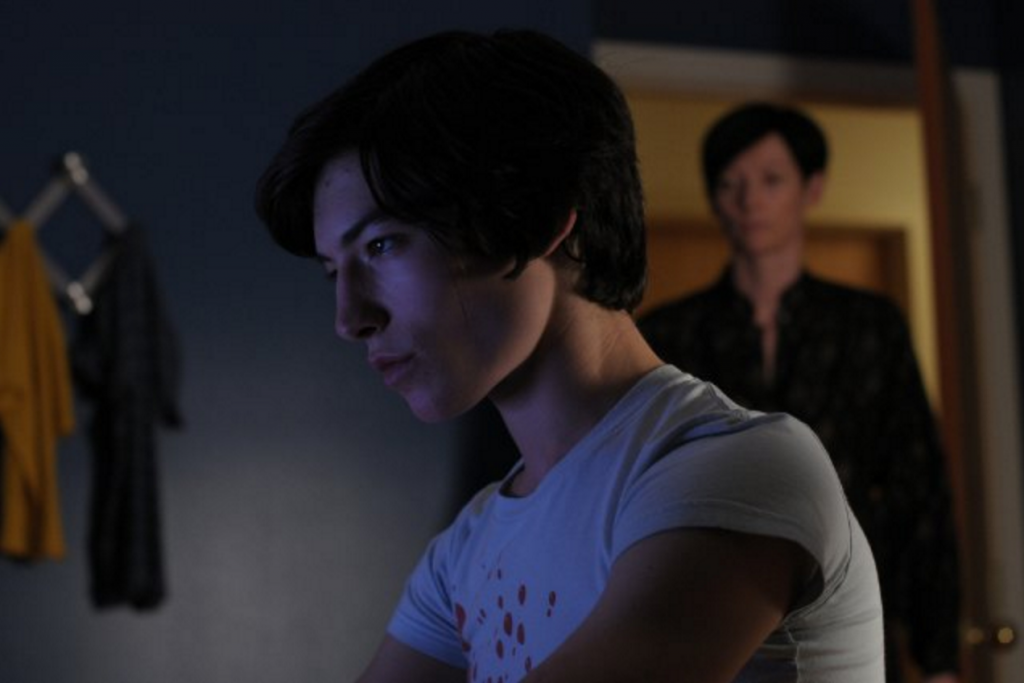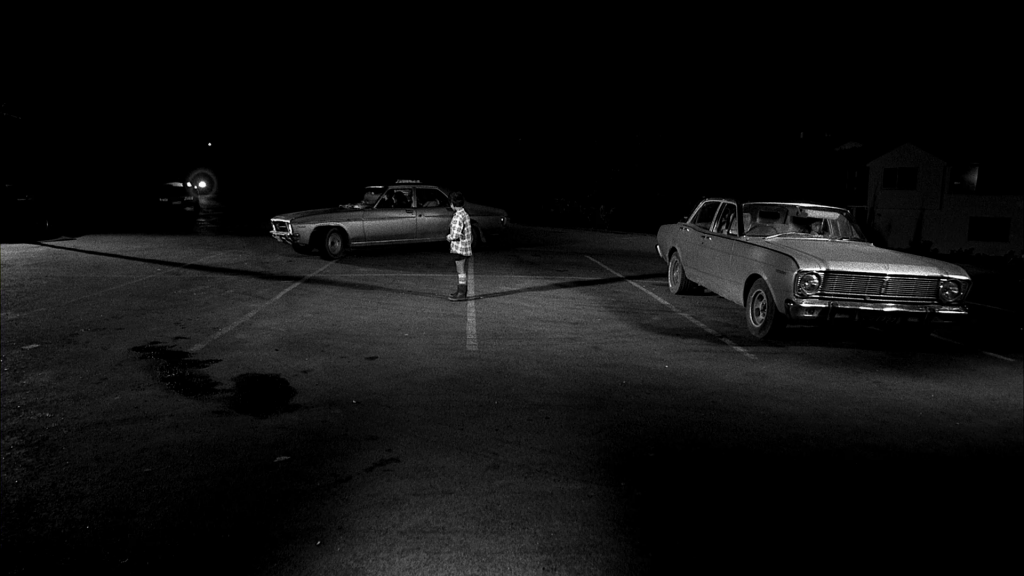– Reflective Report –
Group members: Lucas Worcester and Claudia Viota
Within a flower lies both poison and medicine. Lovers are alike in so many ways. This prompt, given to our group initially, engaged us to start building ideas that we believe would relate to the prompt, but in a non-conventional/ romantic way. We were drawn to relationships within a family, and the idea of how a family can both be seen as medicine and poison. Because of the dark themes we want to explore, we are going to try to create a dark mood for the film, and have the events be very drama orientated.
We came across the short film Let’s Be Civil Kenneth!, directed by Eric Pumphrey. It revolves around the building tension between a 1950’s couple in one consecutive shot. The two characters are married and don’t seem to follow the respective roles in their society. It is quite confronting to see a domestic dispute between two strangers, and as a group we thought it would be interesting to dive into this idea of revealing the life of a dysfunctional family because we often never get to see what happens behind closed doors and really understand what different families are like.
After one of the screenings in our studio, I was unable to stop thinking about Lynne Ramsay’s short Small Deaths. The themes and mood communicated were really captivating and engaging for me as an audience. I knew that Ramsay directed the 2011 feature film We Need to Talk About Kevin, so I was quite excited to see it. The film captures the almost demented relationship between a mother and her son. Kevin, the son, begins to show psychopathic signs of a mental disorder, but unsure whether this is due to the debate over “nature vs. nurture”. Kevin’s mother Eva, played by Academy Award Winner Tilda Swinton, plays a mother who replaces her hostility and hatred for her child with superficial kindness. In the scenes where she lives with her husband, son and daughter, they are situated in a suburban home, which appears quite expensive. This serves as a sort of mask for Eva. Trying to appear normal to the outside world, and even to her. I have seen many domestic dramas focused on the relationship between husband and wife, but very few about the relationship between a mother and her son. Ramsay creates an eerie mood through this non-linear, inside perspective of a mother who has a sadistic son. We Need to Talk About Kevin has similar aspects to the type of film our group wants to make. Portraying the reality of a dysfunctional family/relationship.


Stills from the 2011 film, “We Need to Talk About Kevin”
It was hard as a group to decide whether we wanted to go with realism techniques for film, or to work with surrealism and focus on nightmare qualities about family life. None of us have worked with surrealism in film, so we thought what better time to try it out than in this studio. I’m quite lucky with the draw of this group, because I have had some bad experiences with group work in this course, mostly due to the fact that we are in an environment with so many creative minds, we are all bound to have different ideas and styles. The group I’m in for this studio, although there have been some communication issues and problems with roles, we are able to bounce ideas well off each other, and we all have a pretty similar idea of the film we want to create, and the style we want to use.
A brief synopsis of the film we as a group wish to create is: A dysfunctional couple undergo an emotional onslaught of feelings and physical abuse before they undertake a family portrait. The image we have of the first scene is a setup of a family portrait, starting with a close up of a child, who is seated between her mother and father, as they are sitting getting their portrait taken. The young girl and her father try to smile while the mother weeps hysterically. The father struggles to remain composed as his wife’s cry’s intensifies. He breaks his pose and smacks her on the back of the head. We then plan to show moments from the night before, domestic situations that portray the power play between the parents. After these scenes, we will end the film with the aftermath of the first scene, with the mother just being slapped; she composes herself and presents a pearly white smile. The father squares his shoulders and rests a firm friendly hand on his daughter’s shoulder. At the touch of his grip she cocks her head slightly, producing an innocent smile from ear to ear. Creating a family portrait of how they want to be perceived by the outside world: normal.
The portrait is a symbol of the intended surface appearance that families give off. This superficial image shows nothing but what a family or individual wants you to see. The staged portrait we want to show in the opening scene, implies control and stability of the family, something that they definitely don’t have. Each parent trying to control the situation and create an image free from the tribulations that have formed over the course of their relationship.
Since we decided on a surreal film style, we started to explore short films of a similar nature. Lucas came across a really interesting take on a similar idea we had, a family portrait. The short film by Joseph Pierce A Family Portrait, provides an insight of a photographer taking the portrait of a family, but they cannot seem to get in sync. It starts off quite normal, until photographs of the family start to be taken, with over exaggerated smiles appear in this animation form. The use of exaggeration of body parts and expression is a tool to really show the audience the importance of the expression or movement, for example, the nose of the wife growing and completely covering her husbands head because she is smelling him to see if she can smell another woman. These theatrical traits can also be applied in our surreal domestic drama, such as the couple wearing blindfolds to show they don’t want to even look at each other.
In the reading A typology of domestic violence: Intimate terrorism, violent resistance, and situational couple violence by M.P. Thompson, abuse and violence within an intimate relationship is said to be caused by the control dynamics in the relationship. Domestic violence is quite regularly addressed in the media, with many films and television shows covering the issue. The reading also discusses the idea of “mutual violent control”, where both members of a relationship are controlling and violent, fighting for control over the relationship, but states that there is very little known on these relationships. I found very little information about mutual combat in relationships, so because of the lack of knowledge I have on this dynamic, it will be interesting to sort of figure out how we want to approach it ourselves in the script and performance.
I’ve always been very interesting in photography, doing classes and workshops for the last few years, and I loved that the art by Gregory Crewdson made it into the teachings of this studio. Inviting the audience to be a voyeur on his photographs creates a sense of mystery, because the photograph is just a still moment of time, leaving many questions unanswered, which is sometimes what he intends, stating that sometimes there is no “moral to the story”(5). One of things I love the most about some of Crewdson’s pieces is the idea of showing the audience a domestic situation that we wouldn’t be able to see without him, which relates to our project idea, of seeing behind the closed doors of families. “I want to take familiar tropes like the suburban home … and project onto them some kind of personal meaning”(5), communicating themes and a mood can be as simple as this in a short film, even by using the juxtaposing setting of an average suburban home, with the dramatic events unfolding in the narrative.

Gregory Crewdson: Reclining Woman on a Sofa (2014) from Cathedral of the Pines © Gregory Crewdson. Courtesy Gagosian Gallery
Gregory Crewdson is able to create a melancholy narrative through an elaborately staged shot. In his 2014 work entitled Reclining Woman on a Sofa, there is a story being told. The audience is given the opportunity to see this rare insight on this character’s life. The setting is normal, with pastel coloured furniture, and 1950s styled objects, but the woman lying on the sofa has this look of despair while she is completely naked, almost seeming unaware that she is being watched by so many.
– References –
1. Pumphrey, E. (2014) Let’s be civil, Kenneth!.
2. Ramsay, L. (2011) We need to talk about Kevin.
3. Pierce, J. (2011) A family portrait.
4. Johnson, M.P., 2010. A typology of domestic violence: Intimate terrorism, violent resistance, and situational couple violence. Upne.
5. Morrow, B., 1997. Gregory Crewdson. Bomb Magazine, p.38-43.
6. Crewdson, G. (2014) Gregory Crewdson | reclining woman on sofa (2014).





